Spotlight

Graduate Degrees Conferred Since Summer 2014
Eight Students at Steward Observatory have received advanced degrees since the May 2014 graduation.
Summer 2014: Brandon Swift, MS; Chang You, MS; Amanda Ford, PhD; Kyle Penner, PhD; Kushal Mehta, PhD-- Fall 2014: Katherine Follette, PhD-- Spring 2015: Megan Reiter, PhD-- Summer 2015: Vanessa Bailey, PhD.
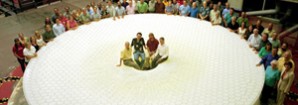
LSST Mirror Moved to Storage at Tucson Airport
The LSST Mirror project reached another milestone Tuesday when it was transported from the Richard F. Caris Mirror Lab to storage at the Tucson Airport. It will remain there until it is time to ship it to Chile. The Arizona Daily Star has a nice article about the move, three photos, and a video. LSST is expected to begin normal science operations in early 2022 after a commissioning phase. LSST information is always available at this link. The UA press release is found HERE.
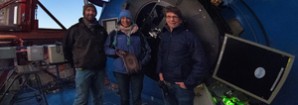
Imagine Looking Through an Eyepiece on a Huge Telescope on the Moon
t's astounding enough to look through an eyepiece on the Magellan telescopes, which really is done on rare occasion. But what if you could transport that telescope to the Moon to get rid of the blurring of the Earth's atmosphere? Or what if you could use adaptive optics to give you a diffraction-limited view through that eyepiece? Circumstances have allowed the MagAO team to do just that. To their knowledge, they are the first humans to spy, with their very own eyes, what it would be like having Magellan on the Moon. Their BLOG describes the events. A Carnegie website story can be found HERE.
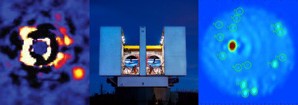
The LBTI Leaps Forward
Professor Phil Hinz, the P.I. of the LBTI instrument, has reported progress on a variety of fronts (complete with some amazing scientific pictures). His words follow:
First, in late April the LBTI project was reviewed by an independent panel, convened by NASA, for readiness to proceed to nulling operations. The panel has given LBTI a "pass" with only minor items to address. As part of the review the LBTI team demonstrated the ability to detect dust around nearby stars with typical uncertainties of 12 times the zodiacal dust in our own solar system. In fact, LBTI has a positive detection on an example star where the level is ~90 +/-8 zodies. The performance is approximately 12 times more sensitive than the Keck Interferometric Nuller.
Again, in late April, the LBTI team released results of LBTI imaging interferometry of Io. This shows the capabilities of LBT with ELT-like resolution. As part of this we resolved the volcano Loki, on Io, detecting it as a ring of lava emission. You can read more about it HERE.
This release follows on two previous science results from this spring: one from a couple weeks ago for the planetary system around HR 8799, where the LBTI team constrains the presence of inner planets (and showcase a very impressive image of the system), and one from earlier this spring where they constrained the spatial location of the inner dust disk around η Crv, using early nulling results with LBTI.
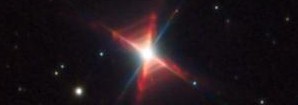
Adam Block's Astrophotography Lecture at the Center for Creative Photography
On April 23, as part of the amazing astrophotography exhibit at the University of Arizona's Center for Creative Photography, Steward's Adam Block gave one of the guest talks. Here is the podcast for your viewing pleasure.
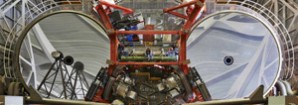
LBT's Multi-Institution LEECH Survey Pays Dividends
Taking advantage of the unprecedented sensitivity of the Large Binocular Telescope in southeastern Arizona, an international team of astronomers has obtained the first results from the LEECH exoplanet imaging survey. The findings reveal new insights into the architecture and dynamics of HR8799, a "scaled-up" version of our solar system 130 light-years from Earth.
LEECH is led by Andrew Skemer, a Hubble Fellow at the UA/Steward, and uses the Large Binocular Telescope Interferometer, which was built at the University of Arizona by Professor Philip Hinz. By directly imaging extrasolar planets, LEECH will be able to characterize the atmospheres of gas-giant planets to determine their compositions, cloud structures and weather patterns. LEECH will also discover new planetary systems by being able to see planets that are closer to their host stars than previous surveys. LEECH will also search for new planetary systems around 200 stars by being able to see planets that are closer to their host stars than previous surveys could.
The press release can be found HERE and the AZ Star article can be found HERE
Pages

For Public
Public events include our Monday Night Lecture Series, world-reknowned Astronomy Camp and Mt Lemmon Sky Center.

For Students
A good place to start if you want to become an undergrad major or grad student, or need to find our schedule of classes.

For Scientists
Find telescopes and instruments, telescope time applications, staff and mountain contacts, and faculty and staff scientific interests.




